BMW
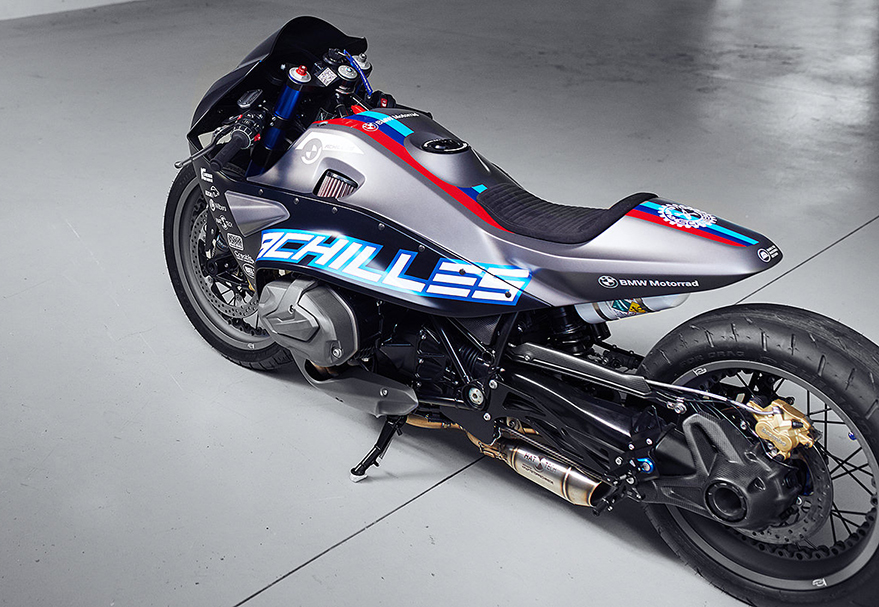 R1250RS Dragster
R1250RS DragsterIn Europe, the Sultans of Sprint competition produces some crazy Dragster, year after year. It is written in the rules: competitors compete for gold on a 400-meter track, but points are also awarded for their imagination and creativity.
That means we end up with some very eccentric bikes, like this race bike powered by a BMW boxer.
Achilles entered the "Factory" class on the Sultans of Sprint, it was built as a side project by an engineer and a designer working on the side of BMW cars ... and it's the complete madness.
To kick off the project, BMW itself donated a brand new R1250RS. We've tested the 1,254 cc boxer engine from the new RS and it's great, with its 136 hp and 143 Nm of torque. The engine also features new "ShiftCam" technology from BMW, which is effectively a variable valve timing system that turns the 1250 into a bullet when you nail it thoroughly.
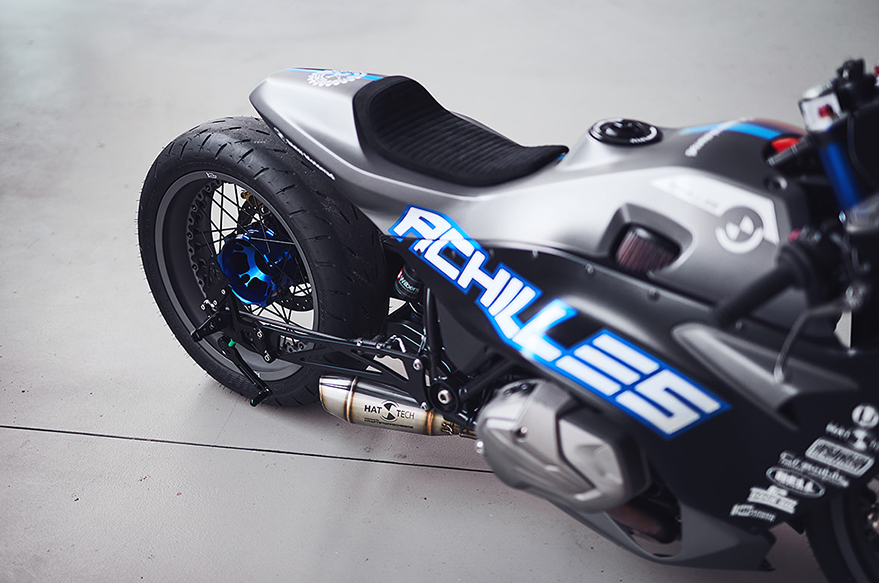
But for this project, he called for reinforcements - joining the designer Krzysztof Szews of Man & the Machines.
Philipp would do the heavy lifting, with Kris helping design. "Designing motoring equipment requires industrial design in its purest form," he says. "There's no need for it to be beautiful as long as it works, right?"
"But that is not the case in the Sultans. This race bike had to be an absolute attraction: an extrovert and unique rocket and an ambassador for the sporting identity of BMW Motorrad at the same time."
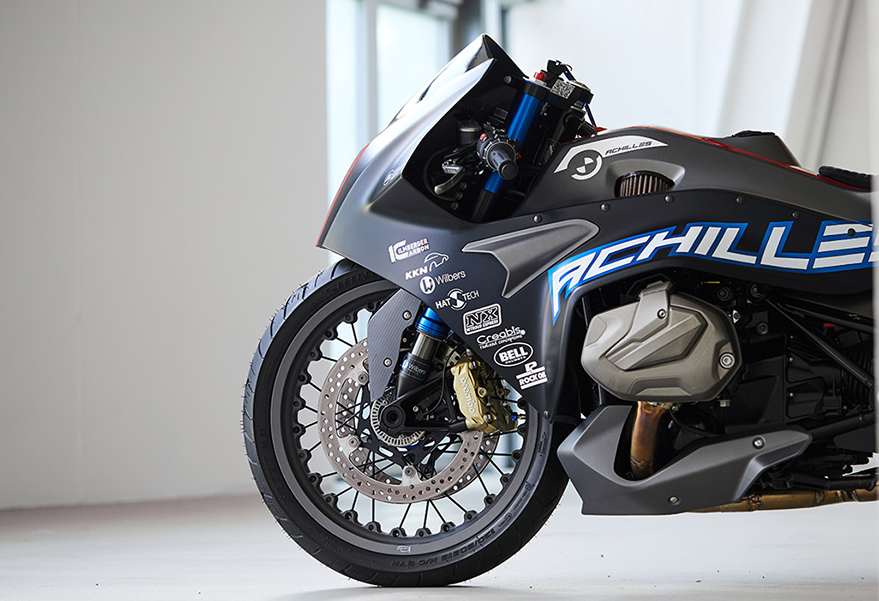 For someone who is an engineer, Phil has put some crazy ideas on the table. Ergonomics and good weight distribution were mandatory, but what about a fairing style racing bike, a touch of bagger flavor and a 21-inch front wheel?
For someone who is an engineer, Phil has put some crazy ideas on the table. Ergonomics and good weight distribution were mandatory, but what about a fairing style racing bike, a touch of bagger flavor and a 21-inch front wheel?"It's not the usual setup for a sprint bike," says designer Kris.
Achilles had to be quick and quick-and that was the reason Kris started drawing. The design required a monocoque body that would work in harmony with the boxer engine and be aerodynamic. He moved all the visual weight forward to embrace that large front wheel and shortened his tail to give the impression of an elongated swinging arm.
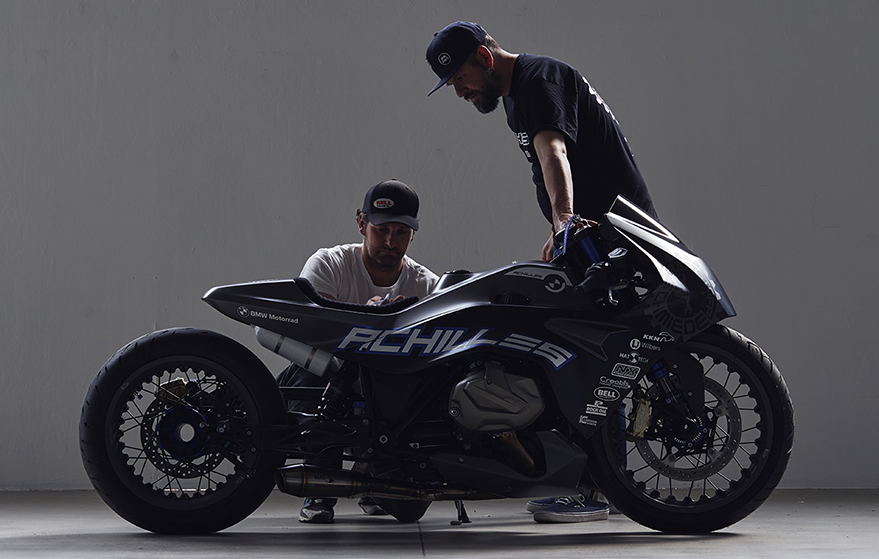
The Wilbers Suspension has shipped fully customizable front and rear suspension components. The forks are held in place by Phil's triple CNC turned tri-axes, with a 50 mm offset for greater wheelbase and ideal weight distribution. The wheels are 19 front and 17 behind the Kineo, made to order, wrapped in Shinko tires.
While this was all happening, the Kraftstoffschmiede team stripped the R1250RS to the bone. Phil and his metal modeler, Franz, have manufactured a new fuel cell and aluminum tail. The latter was designed to host the BMW engine management system and a Nitrous Oxide cylinder.

The footrests are customized, placed as rearwardly as possible and aligned for maximum weight transfer to the rear wheel (and therefore greater traction) of the starting line.
The exhaust system is a custom stainless steel installation of the German company Hattech, which assembled it in just one day. But if we want to know more about the configuration of the NOS injection, we're out of luck: Phil's lips are sealed on this subject. Once Phil and Kris agreed with the final direction of the project - and the chassis was almost ready - the bike was digitized in 3D from one end to the other. Kris then worked with KKN Engineering, which transferred the project to form-fit digital displays.
The initial plan was to mold the bodywork with basalt fibers - but that was out of the budget. Thus, the bodywork was printed in 3D from polyamide material by Creabis specialists. It was produced in several sections, which were then bonded and reinforced with carbon fiber in key areas.
On the engineering side, Phil had to deal with the Euro5 standard to which the original R1250RS is girded. This meant many sleepless nights optimizing the configuration on the test bench and a change in the ratios of the R1250GS.
But it was not without hiccups: in the initial tests, the electronics obstinates in failing under the strong acceleration. Phil finally solved all the problems, just one day before the first race.
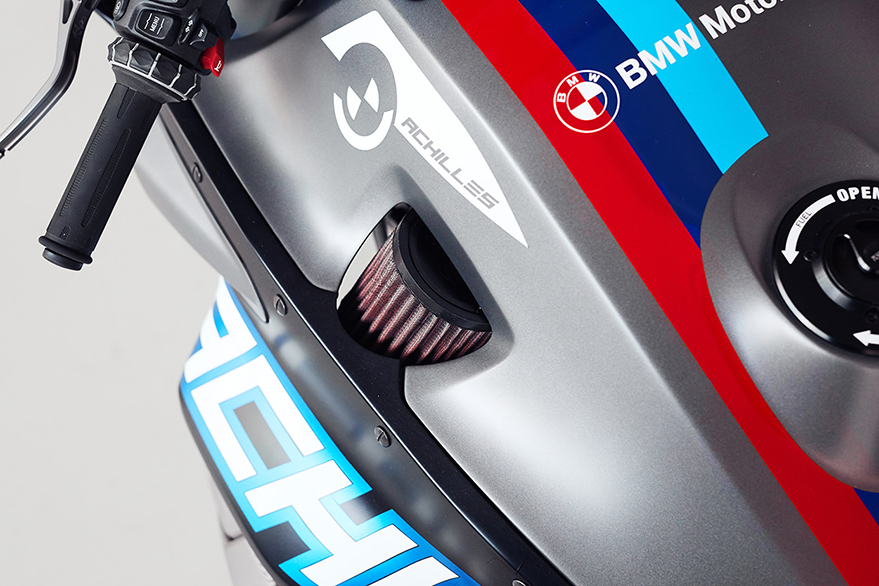
"Phil has made a very valuable contribution to design and learned about industrial design and the motorcycle design process," says Kris, "while I learned all about race bike requirements and tough business decisions."
As the collaboration worked so well, Phil and Kris will team up for more projects under the banner of Rennstall Moto. Your first version - a K75 - is already on the bench, and we can not wait to see it finished ... Paulo Araújo, Portugal

Nenhum comentário:
Postar um comentário